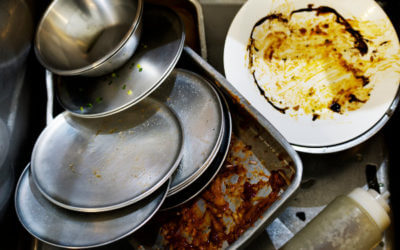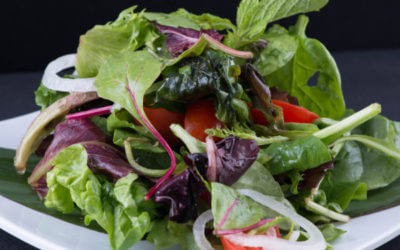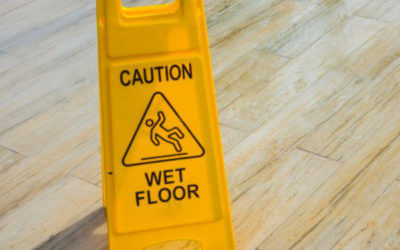Keep Restaurant Equipment Safe: Proper Use of a Breading Station
May 7, 2018Keeping food safe and sanitary is vital for any restaurant.
A lot foodborne illness isn’t the result of the food itself, but rather a misuse of restaurant equipment that causes contamination.
A breading station is a piece of equipment that has a lot of opportunity for cross-contamination, since raw meat is used in it regularly. Make sure your policies and procedures reflect up-to-date safety standards and are strictly enforced.
What Foodborne Illness Can Do to Your Restaurant.
Your restaurant cannot afford to be known as the site of an illness outbreak due to carelessness. If negligence can be proved, you can be found liable for the sick person’s missed work, medical costs, and even long-term health.
There will be a lot financial consequences beyond the illness as well. You could be subject to regulator’s fines, increased insurance premiums, and may have to retrain your staff or close your restaurant temporarily.
In addition, you’ll suffer terrible bad press that can impact earnings for months or even years. In fact, being known as the source of foodborne illness due to misuse of restaurant equipment can cause your business to fail completely.
Foodborne illness can also affect your employees. If a staff member gets sick due to poor food hygiene, you’ll have to replace their hours and help others cover their work. You may even have to handle a worker’s compensation claim.
Avoid all of these by posting and enforcing food safety rules!
Breading Station Safety
In a commercial kitchen, your fryer can include a breading station right in front of the basket. This type of restaurant equipment helps ensure safety by minimizing the transport of raw meat, as well as keeping meat off of counters.
The breading station should be a removable bowl or basin. The breading mix, perhaps flour and seasonings, is placed in the basin. From there your cooks add the food and deposit it straight into the fry basket.
The first things that all fry cooks should know is to never mix meats in the same breading bowl, and to never follow meat with a vegetable. The breading basin should be replaced or dumped out and thoroughly washed before a new product is breaded.
Between batches of the same meat or vegetable, the breading mix must be kept colder than 41 degrees F. However, breading mix should never be kept overnight.
To help enforce these policies, remind your staff that it’s for their safety as well as the safety of the guests. It really does matter if you leave the flour out “just a few minutes” – anyone can get distracted. The kitchen manager should also make sure restaurant equipment and breading basins are clean and available so no one is caught short.
Get the Right Restaurant Equipment For Your Kitchen
At Tipton Equipment, we want to make it easy for you to find all the pieces your kitchen needs. We offer a wide variety of restaurant equipment, from grills to fryers to breading stations and more.
We’d love to help you outfit your restaurant with the best equipment available. Contact us today and let us know your needs!
Why Your Restaurant Needs an App
We know, you’re a restaurant owner, not a developer or programmer. Let other people worry about apps, you just want to run your restaurant! The truth is if you want to have a successful establishment, you have to take advantage of the technology that brings people in....
Choosing the Right Sink for Your Restaurant
There are many, many pieces of kitchen equipment that are vital but often taken for granted. The kitchen sink is one of them. This workhorse of the back of the house handles a lot of jobs. Sinks give you running water as well as a place to wash either food or dishes....
Restaurant Supplies You Need to Add Delivery
Delivery services are becoming more and more popular, and that’s generally good news for restaurants. The ability to order online and receive food in the comfort of home drives up sales and that’s good for revenue. And when these sales don’t require additional tables,...
Should You Add a Salad Bar to Your Restaurant?
New Year’s is a prime time for resolutions – and one of the most common is to eat healthier and lose weight. In fact, for 2018 45% of Americans said they wanted to lose weight or get in shape for the new year. The new year might have you eyeing new options for your...
How to Overcome the Seasonal Rollercoaster
Are you tired of having huge swings in your business throughout the year? Do you wish you could just have consistent, easy-to-predict income? If so, it’s time for you to get off of the seasonal rollercoaster. You might think there’s nothing you can do to overcome the...
The Restaurant Supplies and Strategies You Need in 2019
Are you ready for the new year? If you’re like many restaurant owners, you’re thinking about how to get through the holiday rush – both in your restaurant and in your own life. However, you can’t overlook planning for the future. It’s vital to make sure you have the...
2018 Cooking Equipment Holiday Gift Guide
Do you know someone who loves to cook? Or are you looking for a new, special piece of cooking equipment for yourself? Whether you’re interested in home cooking or you run a restaurant, you can benefit from these gift ideas. These great cooking items will thrill...
Accommodating the Keto Diet at Your Restaurant
The keto diet – a low-carb, high-fat combination – has been gaining a lot of traction in the last couple of years. As a restaurant, it’s vital that you are able to accommodate your diners’ needs. More than that, having popular options on the menu can help bring people...
Restaurant Supplies You Need to Prepare for a Power Outage
It happens to all of us. You’re going on, doing just fine, and suddenly…Dark. The power is out. And of course, you have no idea how long it will last. Fortunately, you have the restaurant supplies and process in place to weather the storm without losing your...
Considerations when Converting a Food Truck to a Restaurant
Your food truck has been successful, and you have a loyal following. So loyal, in fact, that you struggle to serve them all each day. Customers have started to ask you when you’re going to open a restaurant. It started as a teasing suggestion, but it’s become more...
How to Incorporate Curbside Service in Your Restaurant
Are you looking for creative ways to grow your business without also growing your expenses? Are you interested in strategies that can start making a difference today, not just a year from now? If so, then
Tips for Great Plating & Why it Matters
You may have heard that we “eat with our eyes” before we physically eat food. That’s why pictures are so important – on menus, in cookbooks, online, and more. It isn’t just a gimmick – the truth is that the way food looks and smells actually changes our experience of...
Be Proactive: Assess and Address Risks in Your Restaurant
As a restaurant owner or manager, you have a lot on your mind. You want employees to show up on time and ready to give great service. You want your food to be well-stocked, high quality, and ready to use. You need cooks to be attentive and customers to be clear in...
How to Reduce Noise From Restaurant Equipment and More
Having a popular restaurant is wonderful. You have a lot of guests, tables turn over quickly, and you and your employees make a lot of good money every night. However, sometimes popular spots can get low ratings for a simple reason – they’re too loud! It’s not an...
Foodservice Equipment Gone Wrong: When the POS Crashes
The point of sale (POS) system that you have helps you keep your restaurant running smoothly. It helps you track inventory, sales, and revenue. It allows your staff to create checks, swipe cards, and keep tables turning. The POS is a lifesaver – until it isn’t. Maybe...
















I applaud the writer for shedding light on this topic and emphasizing the significance of keeping restaurant equipment safe. Found the tip to never mix meats in the same breading bowl, and to never follow meat with a vegetable in order to avoid cross-contamination quite useful. In conclusion, mastering the art of breading goes beyond creating mouthwatering dishes; it involves a deep commitment to safety and best practices.